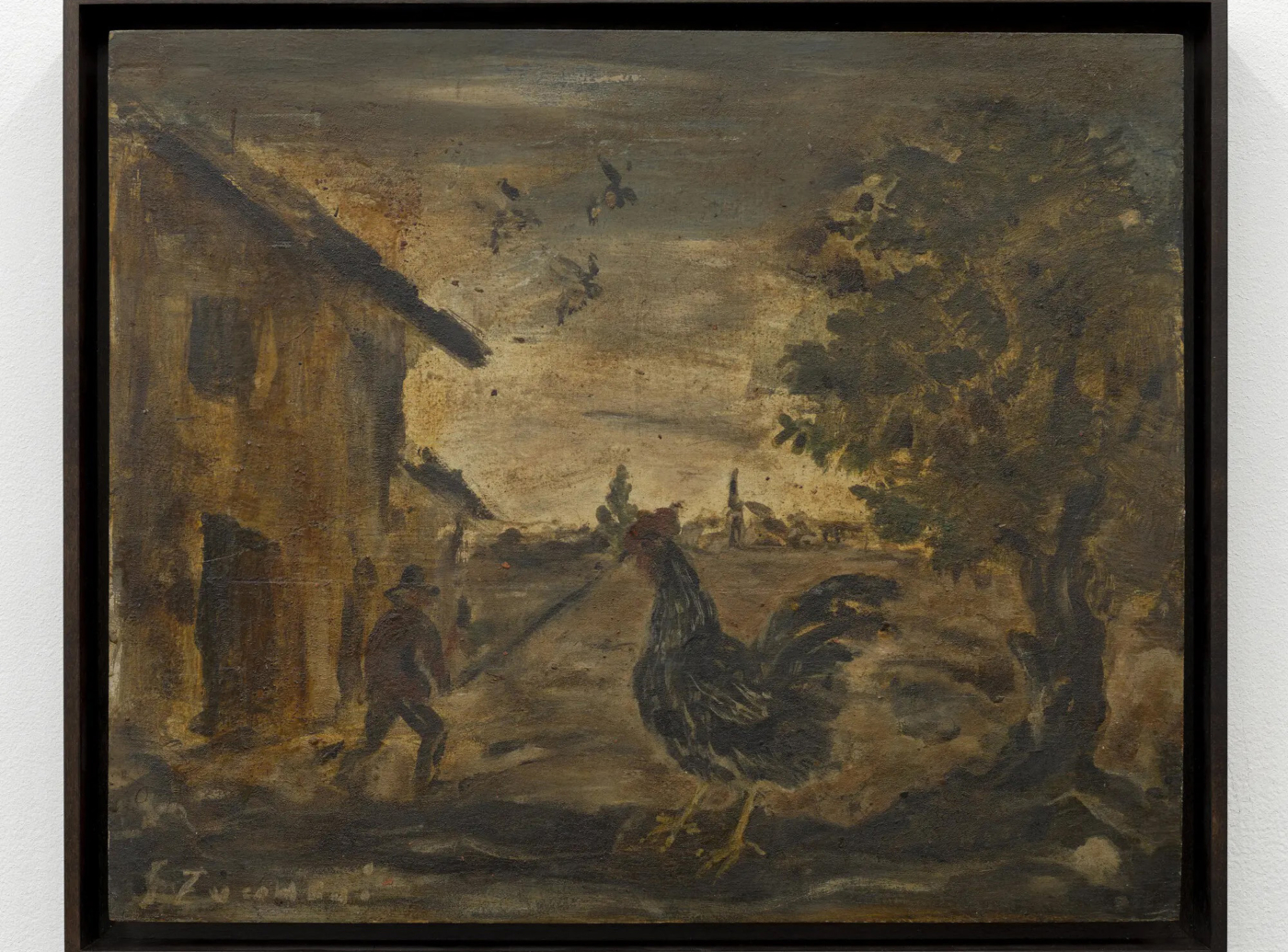
April 4, 2024
Download as PDF
View on The New York Times
Monstrous figs line a country road, a fruit basket fills the town square, red primrose shades the yard. Luigi Zuccheri, born in 1904 to Italian aristocrats, began as a conventional, even retrograde modernist, assembling still lifes of fish and farm implements and studying ex-voto painting. But two world wars took their toll. Starting in 1950 he depicted a pastoral Italy distorted by hierarchical scale: Size conveys relative significance, not reality.
In Byzantine altarpieces, the saints are bigger than the parishioners and Jesus is bigger still. In Zuccheri’s egg tempera paintings, flora and fauna loom in the foreground while human figures skitter through the middle distance. One river scene features a pair of nuzzling ducks twice as tall as the hiker on the opposite bank. A painting of a pond reveals the dramatic irony of a gargantuan crab.
Ocher and olive, soil and spoiled cream, filtered through yellowing varnish, churn on these warped panels. Unlike the crisp sensationalism visions of the canonical Surrealists, Zuccheri’s inventions have a muddy matter-of-factness, as if nothing could be more normal than an elephantine otter.
In the second room, several smaller works share a basic composition: a wayfarer front and center surrounded by dog-size moths and grasshoppers. The brusque traveler goes about his business, almost an afterthought, except he’s a constant. He’s “you,” like Caspar David Friedrich’s Wanderer overlooking the sea: You feel the bigness of the turtles and wildflowers, and your own relative impermanence. The animals receive doting strokes, while the men are dashed off.



